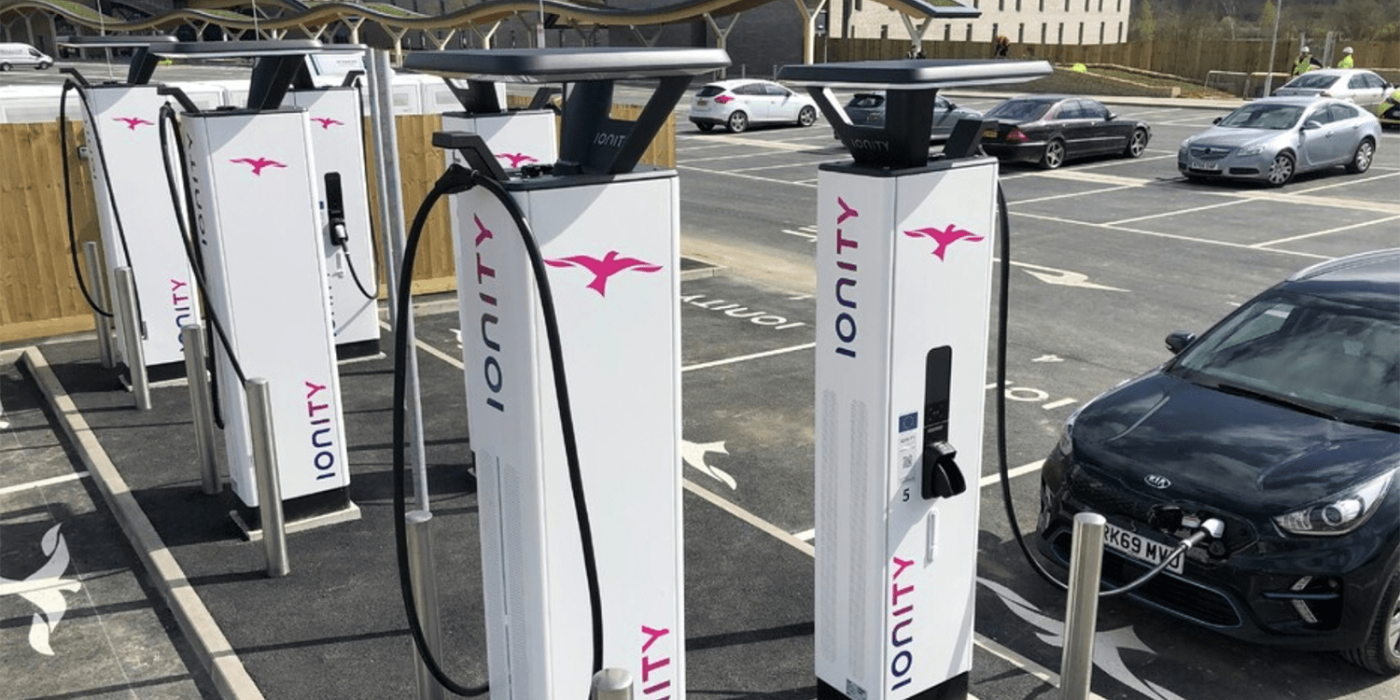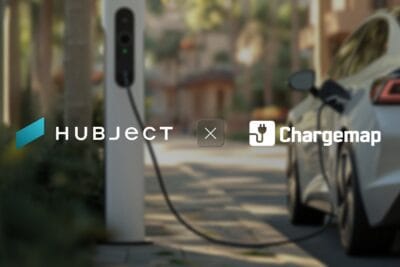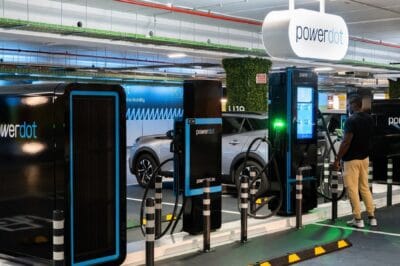UK gov’t wants 2,500 high power chargers by 2030
The British Department of Transport (DfT) has set new targets for the expansion of ultra-rapid charging infrastructure for electric vehicles. The plans envision the construction of at least six HPC sites along motorways by 2023.
By 2030 this number is to grow to 2,500 high power chargers (150-350 kW) with each site having at least six columns. The DfT goes even further and wants to increase the number of rapid charging points to about 6,000 by 2035. To reach this target, the government says it wants to work closely with the operators of major service areas.
However, the DfT has yet to publish details on actual funding measures in its now described ‘Rapid Charging Fund’. It is part of a £500 million commitment for EV charging infrastructure announced as part of the new budget in March. So far, the latest announcement only considers funding to be available to finance “a portion of costs at strategic sites across the strategic road network where upgrading connections to meet future demand for high powered charge points is prohibitively expensive and commercial”. The DfT adds: “Timing and process for delivery of this funding will be confirmed in due course.”
The communication is more explicit, however, on how this high power charger network is to look like. The locations concentrate on England’s motorways and major A roads. Motorway services shall sport at least six high power chargers with some larger sites having as many as 10-12 HPC columns.
The government also focuses on usability and expects that drivers can pay for the cost of charging their vehicle using debit or credit card payment at stations funded through the DfT. Moreover, the network is to be openly available and cater to all kinds of electric vehicles, thus pointing to multi-standard charge columns. In the press release, the DfT also demands “there will be clear pricing information available in pence per kilowatt-hour,” thus indicating the need for a calibration standard. Those ideas are in line with recommendations presented by the Energy Task Force earlier this year.
The announcement must also be seen against the backdrop of the UK discussing to fast-track the transport transition from 2040 to 2035, the year when the UK is likely to ban the sales of combustion engine vehicles reportedly. The government considers (ultra-) rapid charging infrastructure “a key part of this transition”.
The DfT also refers to analysis the government has undertaken to assess the number of charge points required to meet future en-route charging needs when travelling longer distances. The department claims that currently, a driver is never more than 25 miles away from a rapid (50kW) charge point anywhere along England’s major roads, with a total of 809 open-access rapid charge points, as of 1 January 2020. This figure excludes Tesla Superchargers. Including Tesla Superchargers, there are 792 rapid and 311 ultra-rapid devices along the strategic road network (SRN), claims the DfT.





0 Comments